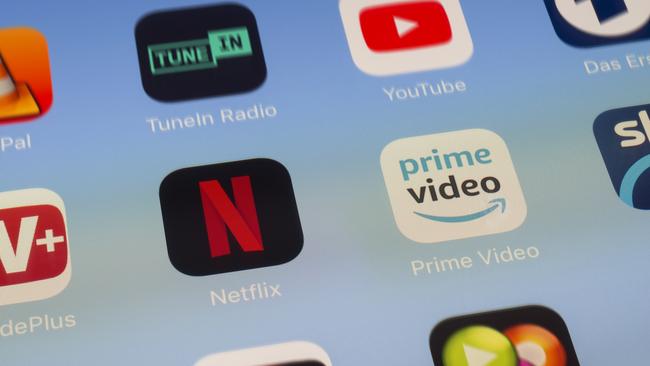Disney vs Netflix: How distribution disruption became TV’s new showstopper
For brands like Netflix, Disney and Paramount, the era of peace in global streaming is delivering almost as much upheaval as the costly war.

Business
Don't miss out on the headlines from Business. Followed categories will be added to My News.
Media is undergoing another major change; this time it’s all things television being upended. The era of peace in global streaming is delivering almost as much upheaval as the costly war.
Netflix, with its ruthless algorithm and nearly 280 million subscribers around the world, remains the global leader in streaming as it pulls eyeballs away from traditional broadcast television. It is more tech company than media, but it is forcing traditional players to respond to its power.

Some of the world’s biggest media companies – Disney, Warner Discovery, News Corp and Paramount – have outlined the future of streaming and broadcast television. And bundling of rival content is the name of the game. Even Netflix is getting in on the act as its growth is starting to run out of steam and a late push into advertising is yet to fully fire.
It’s been a big few days across media, as US players Warner Bros Discovery, CBS and Channel 10 owner Paramount have written off a combined $US16bn ($24.3bn) across their respective television properties.
At the same time, News Corp revealed outside approaches have been made for its Foxtel business, prompting a strategic review of the pay-TV and streaming arm. (News Corp is the owner of this masthead). News chief executive Robert Thomson told investors there is no certainty that a transaction will take place, but the approach has shown the value in the franchise. Any deal could see the emergence of a new local player in streaming or bolster subscribers for a global operator.

All TV broadcast platforms, be they free-to-air, cable or streaming, are fishing in the same pond for the same viewers and this is seeing traditional rivals forming new alliances.
Free-to-air is facing the most extreme pressure, and full-year results in coming weeks from Nine Entertainment and Seven West Media will confirm this. Both local players have been undergoing a round of job cuts, with broadcast advertising soft. Elsewhere, linear TV and cable brands are facing an ad downturn and non-sport channels are fighting for eyeballs.
For streamers, subscriber growth is starting to top out and the market is fast fragmenting, with dozens of global and even more niche platforms popping up.
Even in Australia there are seven main brands, including Binge, Amazon and Disney+ battling it out and another seven or so niche brands including Google’s YouTube Premium and Comcast’s Hayu.
Earlier this week, entertainment giant Disney posted a small – but symbolic – profit across its streaming business for the June quarter. There was a sting too for Disney+ consumers, with another round of price hikes planned from October.
The profit generated by Disney+ of $US47m ($71.2m) is just a drop in the ocean to heavy losses over the years and compares to a June quarter loss last year of more than $US510m in streaming alone.
Finding growth
The key will be how Disney plans to keep growing the audience on its platforms. Even with the might of a media brand like Disney behind it and 153 million global subscribers, chief executive Bob Iger is prepared to strike bundling deals with rivals to improve returns.
Iger says he is prepared to “bundle aggressively” all of Disney’s content arms from studios, cable platforms such as ESPN or even television operations.
Bundling too is a way to reduce customer churn, the silent killer for streamers, where viewers come to binge one show and quickly quit their subscription. Netflix’s strength in engagement is its Google-like algorithm that generates recommendations specific to the view.
“The goal is to grow engagement on the platform,” Iger says.

After giving consumers everything they wanted during the height of the streaming wars, operators are getting more savvy about their content to maximise revenue. They dribble out hit shows over a matter of weeks or even months, instead all at once. A crackdown on password sharing has also offered quick growth gains, but represents a one-off growth burst.
Since launching Disney+ in November 2019 (Australia was one of the first global markets to get the services), the home of Mickey Mouse and Star Wars has lost more than $US10bn as it spent up big on original content and locking down TV shows and sports rights.
Warner Bros is a relative latecomer to global streaming with its HBO Max platform (not available in Australia) but has now just passed over 100 million subscribers. Still, Warner this week issued a painful $US9bn writedown on its cable networks that rely on distribution platforms like Foxtel in Australia, after being hit by soft advertising.

Warner chief David Zaslav describes what is taking place at the moment as a “distribution disruption” and it’s being felt by every media name.
“People are consuming more content than ever. Our content is stronger than it’s ever been. But the fact that it’s being felt by so many, we’ve seen a lot of the local markets, some great content players that don’t have platforms.
“Many of these bundles, they wouldn’t be happening if people felt that they were doing terrific on their own. But it’s the challenge of the marketplace that’s forcing people to say, ‘What makes sense? How could this work better?’
What really works about this is the consumer experience right now is not good. And so we’re all going to be driven toward … what’s the best consumer experience and what is the best content?
“And so we’re being driven through bundling. I think you’re going to see a number of players become part of other players.”
Aggregation the way
Paramount’s streaming platform Paramount+, with 68 million subscribers, expects to turn a profit in the US next year after losing more than $US260m in the June half.
Paramount, which is subject to a takeover deal from David Ellison, the son of Oracle founder Larry Ellison, issued a $US6bn writedown on traditional cable brands like Discovery and CBS broadcast TV business.
In June, Paramount, the studios behind the global NCIS franchise, outlined a round of price hikes to take place this month, but joint-chief executive Chris McCarthy this week said Paramount is in active talks over potential partnerships to “accelerate profitability”.
It’s comments like this that put pressure on Nine's steaming arm Stan, and without a studio arm, or cable business for distribution, is even more vulnerable when it comes to picking the right content deals.

Stan quickly gained ground as first mover in the Australian market, but without bundling options this could leave it more isolated as other players embrace the economics of bundling. Nine chief executive Mike Sneesby, who oversaw much of Stan’s growth, will be acutely aware of this.
Tech majors Apple and Amazon are among the world’s biggest companies and with tens of billions in revenue from other businesses, their streaming businesses work to a different beat than traditional media. Amazon has more than 200 million streaming subscribers bundled onto its Prime delivery program with the aim to make this a platform to sell more things through e-commerce – including ads. Amazon is starting to monetise shows where viewers can buy products they like that they see embedded in TV shows and live sport.
Apple has a reported 25 million subscribers globally, and streaming is a way to keep consumers welded to its Apple “ecosystem” of iPhones, iPads and App store. It also means Apple and Amazon put technology ahead of content.
At News Corp, CEO Thomson says he was not actively looking for a sale of Foxtel before the approaches were made.
“We believe strongly in the potential of Foxtel, given its world-class technology and unique aggregation of sports and entertainment content,” he told investors.

Aggregation is the strategy behind Foxtel’s new Hubbl box that offers customers a one-stop shop to pick and choose their stack of different streaming platforms including Netflix, Disney and Apple. Foxtel’s content is also available on Hubbl, but the platform will become increasingly valuable as it becomes the gatekeeper for distribution.
Indeed, the Kayo sports streaming platform and Binge for drama with a combined 3.2 million subscribers represent the new growth engine inside Foxtel, offsetting broader headwinds on the underlying cable business as the consumer model changes.
The Kayo model is scalable and is being studied around the world. It is the inspiration behind the new Venu Sports streaming joint venture of Disney/ESPN, Fox Corp and Warner Bros. This is set to bundle sports from each of these properties while marking a fightback for traditional media as tech players like Amazon start to circle sports rights. Also in the US just two weeks ago, Warner launched the ultimate bundle of Disney+, Hulu and its Max offerings.
All this means following the alliances across media is the new breakout show to watch.
More Coverage
Originally published as Disney vs Netflix: How distribution disruption became TV’s new showstopper




